How dangerous is black mold in the house for the human body and how to get rid of it
Are you about to cut bread and see velvety black spots formed by multiplied mold? Or did you suddenly begin to suffer from allergies, although you had never noticed anything like this before?
The culprit is black mold, which you encounter from time to time in your own home or apartment. Agree, it’s not very pleasant to see black growths of mold on products whose existence was forgotten for some reason, or on the walls in the bathroom, or, even worse, on the wallpaper in the nursery.
We will help you deal with such an unwanted neighbor. Although it is not so easy to destroy it, its appearance cannot be tolerated. To find ways to get rid of such a scourge, in this article we’ll talk about why black mold is dangerous in the house, what types of mold can live indoors, and what options for getting rid of it can be used at home.
To help in the fight against this terrible enemy, we have also selected visual video tutorials on how to destroy the fungus and tips on preventing its occurrence.
The content of the article:
Types of mold plaque
If you don't look closely, it may seem that black mold is just emerging dirt that can be easily gotten rid of. But that's not true.
Black mold is an external manifestation of a colony of microscopic fungi. Moreover, these colonies can form different types of fungi. The varieties listed below are most often found in our homes.
Fungus #1 - Aspergillus nigra
Aspergillus black (Aspergillus niger) is a saprophyte that has chosen rooms with high humidity: kitchens, bathrooms, toilets or combined bathrooms, swimming pools.
Colonies of this fungus often form in humidifiers, in washing machines and even in air conditioners.
Damp ceilings and walls, covers of old books, and pots for indoor plants are often covered with this black mold. The favorite place for the appearance of the Aspergillus niger colony is tile joints in the bathroom and bathrooms.

This fungus looks quite nice in the photo, but its presence is not at all harmless.
Even from slight air movement, the spores of this parasite spread throughout the room, penetrate the respiratory tract of people and pets, settle on food, and settle in our things.
Thanks to them, completely harmless diseases can arise:
- meningitis;
- myoarditis;
- bronchial asthma or even pneumonia;
- rhinitis.
The presence of spores of this fungus can cause the formation of papillomas and even cancer cells.
If a person happens to inhale a large number of spores at once, he may develop intoxication of the body. With a weakened immune system, which is not uncommon these days, there is a risk of death.
It is Aspergillus niger that can cause pulmonary aspergilloma. Volatile spores of the fungus can easily penetrate through the nasopharynx into the trachea, and then affect the bronchi, alveoli and bronchioles. Once established, they begin to develop rapidly.
Toxins released by the colony contribute to the formation of foci of necrosis. As a result, the parenchymal tissue of the lungs ceases to function, suffocation and death occur.
Fungus #2 - Aspergillus fuming
The peculiarity of this mold is that it can withstand increases in ambient temperature from 12 to 53 degrees.
Fungal spores Aspergillus fuming (Aspergillus fumigates) are very small: only 2-3.5 microns, so they easily penetrate into the lungs of animals and humans. Healthy people can inhale several hundred spores of this fungus without consequences.
But in a person with a weak immune system, the risk of aspergillosis increases many times over.
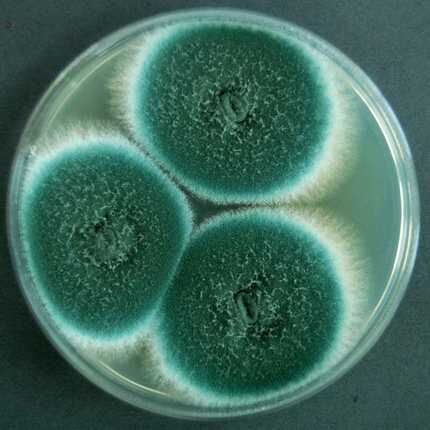
When renovation work is carried out near hospitals and clinics where there may be patients with reduced immunity, the risk of infection for patients increases sharply.
In such situations, it is considered necessary to conduct air monitoring to detect cases of high concentrations of pathogenic spores.
Most often, Aspergillus fumigates affects fruits and vegetables that have mechanical damage.
If fungi have infected the grains from which baked goods are subsequently baked, black fluffy spots or mold deposits will quickly form on the baked goods.
Fuming Aspergillus is dangerous because the toxins that accompany its activity are allergens. They are capable of destroying red blood cells that make up the blood. In addition, the toxins of this fungus can suppress the production of immunity.
Fungus #3 – Alternaria alternata
Another type of spore-forming mold fungi is Alternaria alternata (Alternaria tenuis).
The appearance of the colonies of this fungus depends on the nutrient medium on which they are formed. Most often these are dark gray, almost black, spots. But they can also have a greenish-olive tint.
This fungus lives on a dying part of a plant. Its colonies can be found on autumn leaves, overripe fruits, and even just on the surface of the soil.
This mold can grow on food, including pork, as well as textiles. The toxins of the fungus infect plants and poison grain seeds.

Not only fungal spores, but also its fragments can be found both outside and inside the home, concentrating in house dust. The risk of Alternaria tenuis colonies is higher in homes with a humid atmosphere.
IN wooden buildings this mold spreads faster than in concrete houses. The spread of its spores occurs on windy, sunny days with low air humidity.
In addition to direct infection, which occurs when a person comes into direct contact with Alternaria tenuis, poisoning from the toxins of this mold can occur.
Toxins can provoke an attack of bronchial asthma and the occurrence of dermatitis. In addition, this mold is dangerous and can cause allergic reactions in people who are sensitive specifically to Alternaria alternata.
What promotes the spread of fungus?
So, we found out exactly why mold is dangerous for the human body. Obviously, it is necessary to take all possible measures to ensure that it is not in the house.
You should know exactly how this infection penetrates into your home so that, by taking preventive measures, you can prevent its occurrence.
Warmth and humidity are the two most important conditions for the development of mold fungi.. The optimal parameters for their existence are 70% humidity and temperature from +18 to +25 degrees.
If the room is not yet ventilated, then all the possibilities for the formation of mold colonies are obvious.
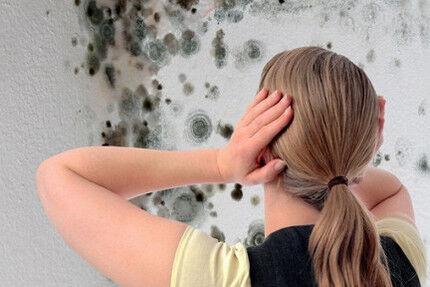
It is clear that to eliminate these factors no significant material costs will be required. Ventilating the room is not that difficult.
But, besides those mentioned above, there are other reasons for the occurrence and development of mold. People, as a rule, are not aware of them. The appearance of mold can be a side effect of the development of the construction industry and the emergence of innovative construction technologies.
Reason #1 - doors and windows made of plastic
Those who have installed at least one plastic window in their home have already appreciated the benefits it provides. Such windows have remarkable soundproofing properties.
They help retain heat. They are easy and simple to care for. In addition, plastic products are durable and repairable. But if they are not used correctly, they can cause mold.

Plastic windows and doors close almost hermetically.That is, the circulation of air masses that arose during the existence of frames made of “breathing” wood is now disrupted.
If the number of glasses in a double-glazed unit is selected incorrectly, the product itself does not meet quality standards, and the installation is carried out in violation of existing standards, then condensation may form on the surface of the glass.
It turns out that plastic products create ideal conditions for increasing humidity in the home. Realizing this danger, window manufacturers tried to provide every opportunity for quick ventilation of the room. One such solution is supply valve.
Regular ventilation of rooms, regardless of weather conditions and time of year, helps to avoid the formation of mold colonies in the house.
Reason #2 - everyone’s favorite drywall
And how can you not love this building material, if with its help you can level any horizontal or vertical surface so easily and quickly. It is plasterboard that allows you to erect partitions of any configuration in the shortest possible time.
This very inexpensive material is really convenient to use in repairs and construction, which is why it enjoys well-deserved popularity.
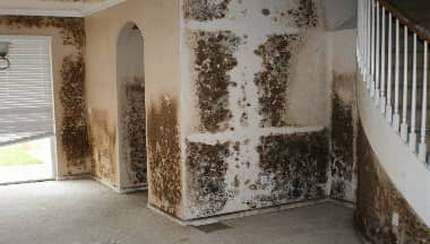
But this material also has a significant flaw: drywall absorbs moisture well, allowing it to linger inside for a long time.
In order to avoid being captured by black mold when using drywall, you must strictly follow the installation technology and remember that the mixtures must have time to dry.
In a room with drywall, you need to create an antifungal microclimate.
In rooms with high humidity levels, special drywall designed for such operating conditions should be used. In addition, antifungal drugs must be added to solutions used during work.
Reason #3 - poor ventilation
A window in a bathroom is a real rarity. As a rule, the layout of our apartments does not provide not only windows in the bathrooms, but also sufficiently effective ventilation.
Meanwhile, a lot of humid air can form in bathrooms as a result of drying clothes or water procedures for which this room is intended. It is difficult for natural exhaust channels to cope with it.
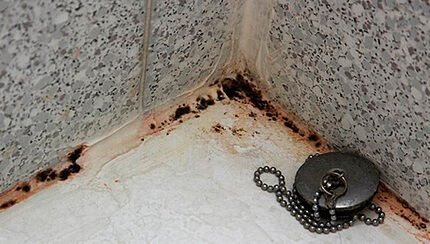
One method to solve this problem is to use forced ventilation. Thanks to this measure, the problem of excess humidity will be solved, and at the same time, conditions for the development of mold microflora will not arise.
Read more about removing mold in the bathroom read here.
Reason #4 - damp basements and damp walls
Quite often, miscalculations in design can lead to the fact that during rain the walls or corner parts of buildings get wet, and freeze in the cold part of the year.
The same problem occurs when drainpipes are missing or clogged. If you do not pay attention to this, then over time mold colonies may form on the walls.
Gradually, the fungus grows through the brickwork or panels and ends up indoors.Invasion will occur even faster than might be expected if there are cracks in the brickwork or the panel joints are not well waterproofed.
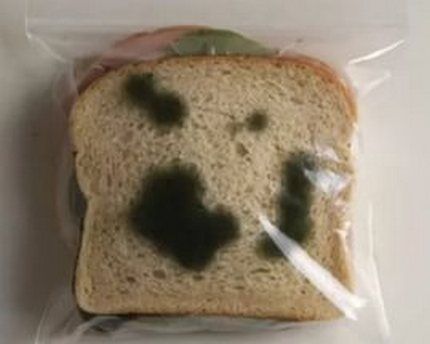
The source of mold may be in a damp basement. In it, colonies can form and multiply, and then, using ventilation ducts, they spread throughout all rooms.
In a private home, this problem is solved independently by arranging a high-quality basement ventilation. To eliminate dampness in an apartment building, you will have to contact the housing office.
Faulty sewerage and water supply also create conditions for the development of fungi.
We can bring black mold into our home ourselves, without meaning to. It is enough to buy bread products baked from contaminated grain in the store.
Such bread will very quickly become covered with plaque and then mold. Under no circumstances should you eat it: it is dangerous to your health. It is also not suitable for animal feed.
It should be placed in a plastic bag and then placed in an outdoor trash bin.
Subtleties of mold control
If you find black mold in your apartment, then you need to deal with such a neighborhood without delay. The longer colonies remain in your home, the more damage they can cause to health, and the more difficult it will be for them to survive.
It must be stated right away that The use of bactericidal agents in the fight against mold will not help. These drugs are designed to kill bacteria, not fungi.
You have a battle with mold parasites, for which you need special antifungal drugs.
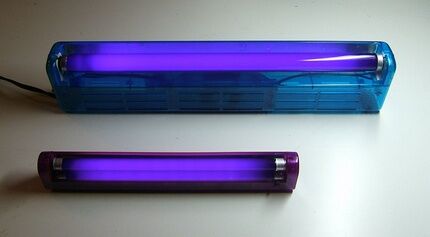
An excellent and very effective way to get rid of mold is to treat the room with UV lamps. Under the influence of ultraviolet rays, the spores die.
When using this lamp, it is necessary to observe some safety measures: remove pets from the room being treated, including birds and aquarium fish, and also remove all fresh flowers from the room.
There are other methods of combating mold fungi:
- If mold colonies are located on specific objects that can be taken out, they must be removed outside the home. Send old wallpaper, moldy textiles or contaminated putty to the landfill.
- Special antifungal drugs and antiseptics should be added to all construction and finishing mixtures that are used in the construction of a private house or when renovating your apartment. Often mold takes root in the tile joints in the kitchen and bathroom. This means that special attention should be paid to the grout.
- Areas affected by fungi can also be treated with special industrial preparations. In case of their absence, use the means that every housewife has.
If mold stains appear on non-porous surfaces, which include, for example, tiles or mirrors, then to eliminate them you can use the following popular substances: bleach "White", ammonia, borax solution or vinegar.
Can be applied to the affected surface hydrogen peroxide, and after 15 minutes, rinse the area with water. Baking soda has also proven itself to be excellent.

The situation is more complicated when colonies appear on the plaster: the entire affected part must be mechanically removed. It is better to do this with a wire brush.
Cleaning is carried out to the entire depth of mold penetration. The seams between the tiles are also cleaned with a sharp tool.
It is advisable to dry the cleaned surface using an industrial hair dryer and treat it with an antiseptic. Moreover, not only the area from which the mold has been removed should be treated, but also the adjacent surfaces.
Whichever of the methods listed above you choose, it is important that the mold is destroyed or, at worst, removed outside the apartment. Its appearance cannot be ignored.This is too dangerous a neighborhood that needs to be gotten rid of by any means.

Required Security Measures
Considering that spores, particles of mold itself and the toxins it releases can spread with air currents, gathering to fight fungal colonies, it is necessary to protect your respiratory tract and skin from unwanted contacts.
Safety precautions:
- Do not neglect personal protective equipment such as a respirator, waterproof gloves and safety glasses.
- To prevent spores that have been removed from one surface from taking root on another, the surfaces of the furniture and floor must be covered with oilcloth, which you don’t mind throwing away later, or with plastic film.
- Anything that can be taken out of the room during cleaning is best removed. In the bathroom this could include, for example, washcloths, brushes, towels and curtains.
- If the situation is serious and mold has managed to take over large areas of the room, all objects that can get fungal spores should be wrapped in film. Choose a thicker film to ensure reliable protection. It is not advisable to save on your health: then you will spend more on medicines.
- Never turn on the fan while cleaning. Mold spores can easily spread throughout the room, and then there is simply no escape from them: they can appear unexpectedly and in the most inappropriate places.
- Do not use a household vacuum cleaner to remove fungal colonies. The spores or toxins themselves may end up on the inside of this household appliance.The spores in the vacuum cleaner do not die, but simply wait in the wings and suitable conditions for the revival of the colonies.
- But the dehumidifier, if there is such a device in the house, should be turned on. Dried air will deprive microorganisms of the chance to continue existing.
- After cleaning the contaminated area, you must throw away all rags, brushes, gloves and films along with the respirator.
Mold control is an inevitable event in case mold has already started. But it is much better to prevent its occurrence by not creating conditions for the development of fungal colonies.
Conclusions and useful video on the topic
You can write a lot about how dangerous mold is, but it will not make the same impression as the stories of those who were once exposed to it.
It’s good that when people realize in time what is causing their troubles and poor health. The following video will help you understand the problems that arise from exposure to black mold:
This video clearly demonstrates the methods of preventing and combating fungal colonies.
Defeating your velvety enemy is not at all easy, but it is possible. It is much more important to ensure such living conditions in your home that mold does not grow in it at all. Don't leave her any chance to live.
Perhaps you also have experience dealing with insidious mold? Please tell us about proven methods for its destruction. Comment on the material and leave questions on the topic.




Tell me, when using a UV lamp, is it necessary to use any eye protection? And, of course, mold, I will say from my own experience, is very difficult to fight. In the rooms, interestingly, mold appeared around the newly installed plastic windows instead of wooden ones.
Apparently, due to insufficient ventilation, high humidity is formed. Nothing can be done about mold: we tried bleach and “Belizna” - it still appears. We strip it down to the concrete, plaster it, and do it again. All this is due to the too tight fit of the structure to the opening - these are the plastic windows.
Yes, be sure to buy yourself safety glasses. They are available in almost any construction supermarket and are inexpensive (200-300 rubles). I bought these myself for plumbing work, but they are also suitable for protection against UV radiation. By the way, it was with the help of UV lamps that I managed to get rid of black mold in the basement. After that, I treated the floor and walls with a special protective compound to prevent it from appearing again.
How long does UV lamp exposure need to be to kill mold? I want to sort it out once and for all.
Hello. It is quite possible to carry out treatment with a UV lamp every day for 20 minutes, observing safety precautions. Unfortunately, using only one lamp will not completely remove mold; a high-quality integrated approach is required, especially since the lamp burns out mainly bacteria and only some types of fungus; many types of mold are immune to it.
Plastic windows have a “winter/summer” adjustment; set it to something in between, then ventilation will appear.
Good afternoon, Alexander. Any good sunglasses labeled UV 380 or UV 400 will do, unless you plan to be in the room the entire time the lamp is on.
High humidity has its reasons. In your case, it seems that the slopes are not insulated. When renovating, only plastering a concrete wall is not correct. Do everything you described and process twice antifungal agents.
Then I recommend using extruded polystyrene foam as insulation. Buy the option with a mesh applied; the putty will spread over such a surface more easily, and the fluidity of the solution will become much lower. For clarity, I have attached a drawing.
After puttying, paint with water-based paint of the first class of wash resistance. It is advisable that the paint contains latex.
Also, you did not indicate that with external slopes. They also need to be equipped. Foam tends to break down when exposed to sunlight.
first, it must be washed off well with a real, highly concentrated solution of household soap, almost foam, then be sure to treat it with a special composition to combat fungus, do not forget to wear protective equipment on the respiratory tract too, after drying up to 3 times, whiten it with lime and in a solution for use lime for finishing, we treated it this way and it’s been gone for 3 years now, and don’t forget to wash everything after treatment with household soap and the room itself completely too
To get rid of it, you need to install PVC slopes, foam the ebb (if it is not foamed), and install a supply valve on each window in the apartment or house.
Hello. I’ll correct it - not to get rid of it, but to prevent its occurrence and provide a comprehensive solution to eliminate its further spread.
Good afternoon. I have mold in the air passages - in the ventilation where the air conditioner blows - how can I get it out of there?
Good day, Natalia.
It sounds like you are using a ducted air conditioning system that hasn't been cleaned in a while. Re-read the contract with the organization that installed the system - you need to find the section describing operational maintenance (there may be options for annual, quarterly, monthly).
You cannot deal with mold on your own, because the air ducts, as far as I understand, are hidden by the building structures - you need to call specialists who have special equipment and appropriate “chemistry”.
Mold has appeared in the basement of a private house, now it’s winter, the ventilation in the basement is closed, if we open the ventilation on the street for sale, will the mold die? Or how to deal with it?
To fight THIS infection, you need a quartz UV lamp emitting light with a wavelength from 204 to 254 NM (nanometers). I determine the initial stage and location of invisible moldy fungi using DIOLOCATION.
What does it mean to determine using dowsing? Is this some kind of device?
Hello, I am attaching photos, what type of mold is and what should I do?
In the old days they said this….. if there is black mold in a house, then you need to leave this house and burn the house down!! It's not just like that......
Good afternoon. There is mold under the wallpaper in a rented apartment. Is it possible to kill it with a lamp without removing the wallpaper, for example by turning it on for a day?
Please answer this other question. We live in an apartment building on the top 9th floor. The wall in the bathroom is adjacent to the entrance, or rather to the staircase leading up to the attic, and there is also an elevator nearby on the other side of the stairs. This wall also faces the cold attic. Accordingly, she is cold. My husband took mineral wool for insulation. I attached aluminum profiles in the form of a lattice to the wall, put mineral wool in the cells, covered it with moisture-resistant plasterboard on top, glued special reinforcing tape to the joints of the plasterboard, and painted it on top with “liquid rubber” - black special. dye. And after all this, stick the ceramic tiles. There is no ventilation in the bathroom. There is a small round hole in the wall to the adjacent toilet. The hood in the toilet has natural ventilation, which hardly works, plus a fan. We always keep the doors to the bathroom open. I'm worried that a fungus may appear under such insulation with mineral wool.And under the layer of drywall and tiles we won’t feel the smell, that is, if something went wrong. Please tell me, was it possible to insulate like this? A year has already passed.